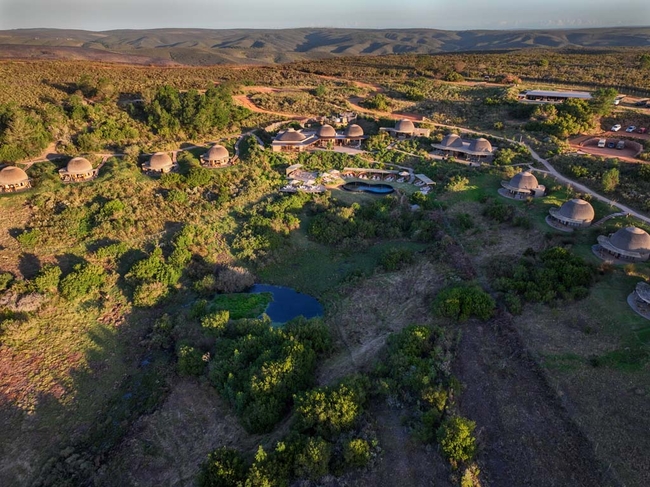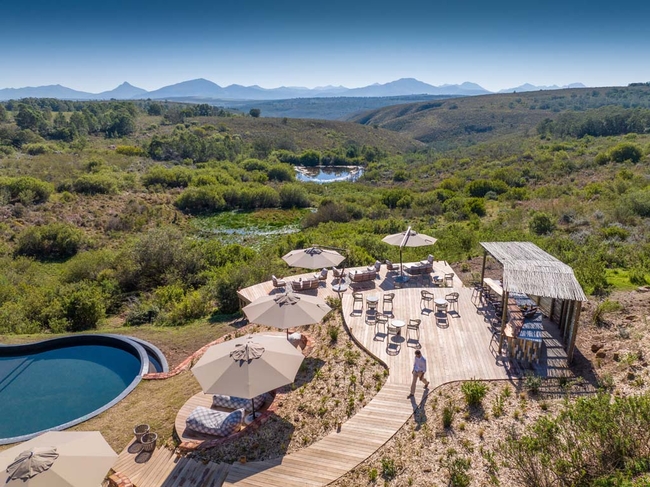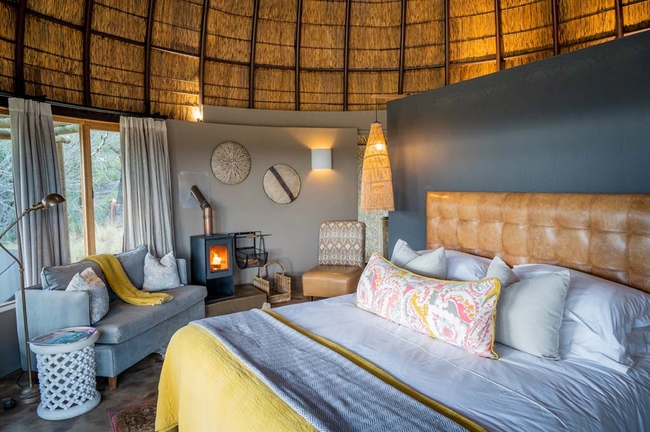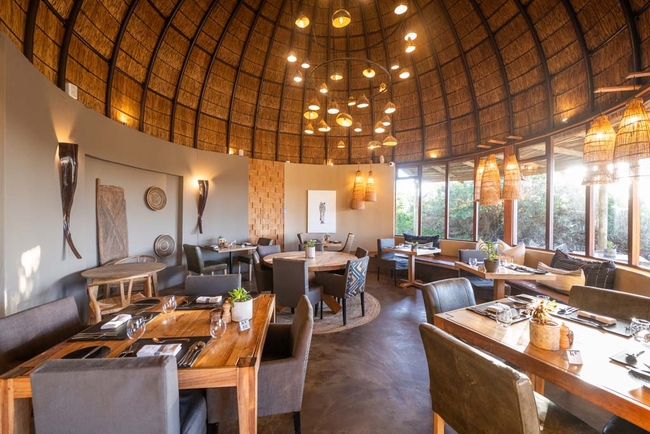Threskiornis aethiopicus - The African Sacred Ibis
The vivid black-and-white markings of the African sacred ibis certainly ensure that this bird stands in stark contrast to the greens, browns and blues of the South African landscapes. They have the same silhouette as their hadeda relatives, but are undoubtedly set apart by their plumage.
Did you know? Introduced populations of the African sacred ibis in Europe are thought to have been established after escaping from zoos.
The sacred ibis' body is almost completely white, with black feathers on its rump. The wings are edged with a black outline, which is only really visible when the birds extend their wings in flight. These wings also have some bare areas, in which the pink skin shows, both on the top and on the bottom.
The neck and head are bald and black, as are the legs and feet. A long curved beak gives the bird a dramatic appearance. Young birds have a smaller beak and their white plumage still looks a little dirty, in comparison with the adults. In addition, they retain some feathers on their necks.
Males tend to be slightly larger than females. When breeding season comes around, the males develop a blue iridescence on their shoulders and the pink exposed skin on the wings becomes a brighter shade of red. The black wing tips also extend their hue further in, and the black skin on the bald areas begins to shine. Their legs even take on a red tint.
Size
Range mass: 1.3 – 1.5kg
Range length: 68 – 75cm
Range wingspan: 112 – 120cm.
Habitat
The African sacred ibis favours marshes and shorelines, where it can wade peacefully in the water and mud in search of a meal. As urbanisation and development continue, these birds have also been known to visit rubbish dumps and farming areas.
Distribution
This African sacred ibis can be found throughout sub-Saharan Africa, as well as in parts of Iraq. It was once common in Egypt too, but is now extinct there. In fact, it was honoured and worshipped as a symbol of pagan god Thoth.
Diet
The sacred ibis is a versatile diner, and will eat the insects, reptiles, little birds, fish and frogs that are available to it in its given habitat. Because it eats insects and insect larvae, the sacred ibis has been a useful visitor to the farmers, who benefit by ridding their crops of these bugs. Sadly, the insecticides that are used on the crops are often deadly to the birds as well.
Socialisation
The African sacred ibis tends to nest in large colonies of other waders (like herons). The females use their array of sounds to attract a mate during the mating season and while in the actual act of mating, and individuals use some of the sounds in their repertoire when on their breeding grounds.
When foraging for food, these birds may be found in groups of between two and 20 individuals. Of course, there have been unusual circumstances in which hundreds of birds have been found wading and hunting together.
Communication
This bird uses vocalisations that are varied. There are croaking barks that are used in flight, as well as squeaks and more melodic sounds. Unlike hadedas, the sacred ibis is a rather quiet bird.
Reproduction
The female ibis builds a fairly large nest in a tree using the sticks, leaves and grasses that the male brings to her. Breeding colonies can number between 50 and 2 000 pairs of birds. The female will lay between two and five dull-white eggs, after which she and the male will take turns to incubate them. While one protects the eggs, the other is looking for food.
The little chicks are fed and kept warm by both of the parents until they fledge, which is when they are about 39 to 45 days old.
The African sacred ibis reaches sexual maturity at about four or five years of age. Breeding pairs stick together for only one mating season.
Incubation
28 days.
Life Expectancy
Estimated at 20 years.
Predators
The sacred ibis enjoys excellent population numbers and is not facing significant threats. However, it is negatively affected by urbanisation, pollution, pesticides and hunting.
References
ARKive; BirdLife International; Seaworld; Biodiversity Explorer.
Stay at African Sacred Ibis





Sleeps 116 people in 24 rooms
Gondwana Game Reserve provides the perfect safari break for Cape Town visitors and residents. Less than a four-hour ...
- free wifi
- all ages welcome
- hot tub
- power stays on
- parking
- swimming pool
- aircon
- airport transfers
- from 17850
- R
- 16958
- per room per night
based on 2 persons
instant booking possible
Additional Reading
You might also be interested inWhere to see African Sacred Ibis in their natural habitat?
Want to see African Sacred Ibis in their natural habitat? In South Africa, the African Sacred Ibis can be seen in many nature reserves throughout the country including...
African Sacred Ibis
concern
Birdlife
- Birders from around the world come to South Africa to experience the great variety of typically African birds, migrants, endangered, and endemic birds.
- Endemic and Near-Endemic
- Other Notable Species
- African Darter
- African Fish Eagle
- African Hoopoe
- African Jacana
- African Sacred Ibis
- African Scops Owl
- African Spoonbill
- Barn Owl
- Bateleur Eagle
- Bearded Vulture
- Black-headed Heron
- Black-shouldered Kite
- Blue Waxbill
- Common Waxbill
- Crested Barbet
- Egyptian Goose
- Glossy Ibis
- Great White Pelican
- Greater Flamingo
- Grey Crowned Crane
- Grey Heron
- Hadeda Ibis
- Helmeted Guineafowl
- Kori Bustard
- Lappet-faced Vulture
- Lilac Breasted Roller
- Little Bee-eater
- Little Egret
- Malachite Kingfisher
- Marabou Stork
- Martial Eagle
- Ostrich
- Pel's Fishing Owl
- Saddle-billed Stork
- Secretary Bird
- Southern Ground Hornbill
- Spotted Eagle Owl
- Wattled Crane
- Birder-Friendly Lodging
- Game Reserves
Tips & Information for Tourists
- Travelling to South Africa? We make it easy for you to plan your trip online. We have some useful tips for tourists and then start planning your trip with our introduction to South Africa.
- By Province
- Getting to South Africa
- Getting Around in South Africa
- South Africa's Climate
- Exchange Rates and Currency
- Maps / Atlas
- Malaria Risk Areas
- Wildlife
- Birdlife
- Plant Life
- Languages and Culture
- South African Cuisine
- Top Attractions in South Africa
- Popular Tourist Routes
- Find a Hotel
SA-Venues.com® has been assisting travellers with their South Africa travel plans since 1999, and is the largest, independent online travel guide for South Africa available in both English and German.
SA-Venues.com © 1999-2025. All Rights Reserved. Find and book hotels and accommodation in South Africa. Sitemap





